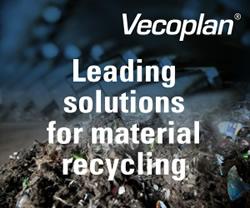Grain Belt Express transmission line passes major regulatory hurdle
Upgraded and expanded transmission infrastructure is essential to unlock homegrown clean energy and further strengthen grid resilience
JEFFERSON CITY, Mo. — Low-cost clean energy is one big step closer to reaching more American consumers thanks to a unanimous decision yesterday by the Missouri Public Service Commission (PSC) approving the Grain Belt Express transmission project. The long-distance, high-voltage direct current (HVDC) power line will reliably deliver large amounts of clean energy, including cost-saving wind power, to homes and businesses.
"Missouri's Public Service Commission just handed consumers a big win by approving the Grain Belt Express project," said Amy Farrell, Senior Vice President, Government and Public Affairs, American Wind Energy Association (AWEA). "Upgraded and new transmission lines open up America's low-cost clean energy resources for consumers and make our grid even more resilient."
Missouri's approval creates strong momentum for the Grain Belt Express, but additional commercial and regulatory steps remain before construction can begin, including approval of the acquisition of the project in Kansas and Missouri by Chicago-based sustainable energy developer and operator Invenergy. The PSC's decision indicates those steps are well worth taking, noting that the Grain Belt Express project is in the public interest in part because it will facilitate the growth of affordable, reliable, safe and clean wind power. Nationally, wind power is now the lowest cost source of new electricity generation on average.
Transmission projects, like Grain Belt Express, are essential as the U.S. transitions to a cleaner energy mix. Infrastructure constraints are increasingly preventing consumers from accessing the full cost-saving potential of wind and other clean energy resources. That's because America's transmission lines were largely designed and built before renewable energy became mainstream. Frequently, transmission lines do not reach some of the windiest parts of the country, which can generate wind energy at the lowest cost. Studies frequently find that connecting low-cost energy sources to homes and businesses through well-designed transmission projects provides significant benefits to consumers.
"America's energy infrastructure needs a reboot to efficiently serve the 21st Century economy," said Farrell. "But we can't get there without transmission planning and permitting reforms at the regional and federal level. Regulatory decisions shouldn't take years for projects so clearly in the public interest."
###
AWEA is the national trade association of the U.S. wind energy industry. We represent 1,000 member companies and over 100,000 jobs in the U.S. economy, serving as a powerful voice for how wind works for America. Members include global leaders in wind power and energy development, turbine manufacturing, and component and service suppliers. They gather each year at the Western Hemisphere's largest wind power trade show, the AWEA WINDPOWER Conference & Exhibition, next in Houston, May 20-23, 2019. Find information about wind energy on the AWEA website. Gain insight into industry issues on AWEA's blog, Into the Wind. And please join us on Facebook, and follow @AWEA on Twitter.
Featured Product

